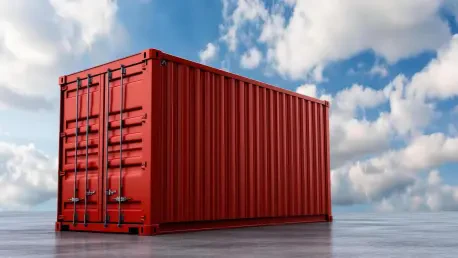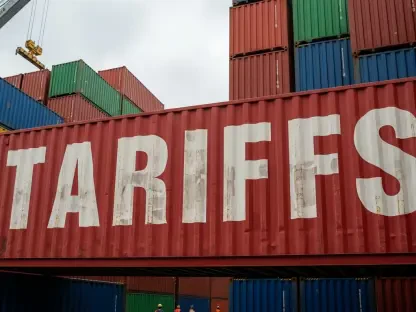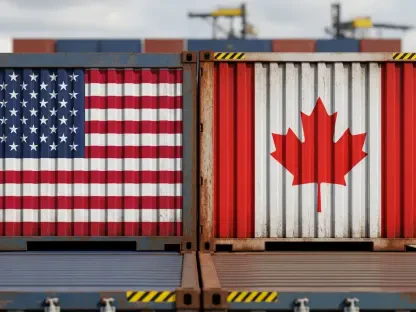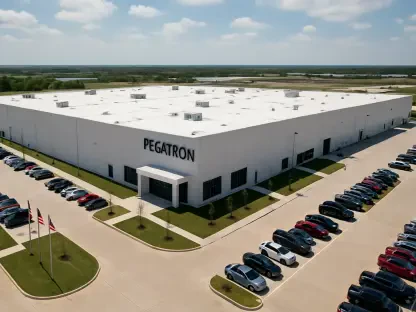In the ever-evolving world of logistics and supply chain management, where digitalization and artificial intelligence are transforming traditional practices, few are as well-versed and innovative as Rohit Laila. With decades of expertise in logistics and a passion for technology, Rohit shares insights into the groundbreaking advancements facilitated by Net Feasa and its recently launched Agentic Control Tower™.
Can you tell us more about Net Feasa and its role in supply chain digitalization?
Net Feasa has carved a niche in translating traditional supply chain operations into the digital age, enhancing efficiency and connectivity. Our expertise lies in using cutting-edge IoT and AI technologies to turn shipping containers into active participants in the logistics process. By doing so, we’re not just optimizing the existing workflows but redefining how logistics operate at a fundamental level.
What exactly is the Agentic Control Tower™, and how does it transform the traditional shipping container workflow?
The Agentic Control Tower™ is a revolutionary platform that leverages Agentic AI to transform shipping containers into intelligent entities within the supply chain. Unlike traditional models where containers are passive elements, our platform enables them to actively engage in their logistics. Containers can now initiate auctions for cargo slots and manage their transport schedules autonomously, choosing the best possible options for themselves while still en route.
How does Agentic AI enable shipping containers to initiate auctions and manage bids?
Agentic AI empowers each container with the ability to assess its current status, including location, schedule, and destination. With this information, the AI can autonomously initiate and manage auctions by negotiating bids for cargo slots. This process ensures that containers secure the most profitable and efficient routes, thereby significantly enhancing both value and efficiency for shipping companies.
In what ways does the Agentic Control Tower™ select the best option for a container’s next job while still in transit?
While the container is moving, the Agentic Control Tower™ continuously evaluates all potential options using a comprehensive set of criteria, such as timing, cost, and route efficiency. By doing so, it selects the most advantageous route or cargo slot for the container’s next job, ensuring that decisions are made in real-time as conditions evolve.
What role does the IoTPASS™ edge device play in enabling the connected container?
The IoTPASS™ edge device is crucial in this ecosystem by providing the connected capabilities needed for the container to collect and transmit data. It serves as the bridge between the physical container and digital data stream, enabling real-time visibility and analytics that are essential for making informed decisions.
Can you explain the concept of Reflective Agentic AI and how it applies to intermodal logistics?
Reflective Agentic AI is all about self-awareness. It allows the AI to evaluate its own decision-making processes and outcomes. In intermodal logistics, this means the AI can analyze its actions after they occur, assess their efficiency, and adjust future strategies accordingly. This self-improvement over time is crucial for continuously optimizing supply chain performance.
What kind of data points are used by the connected container to optimize logistics workflows?
We utilize a wide variety of data points, including current geographic location, container status, environmental conditions, cargo type, and even market demand forecasts. By integrating both real-time and historical data, the system can make well-informed decisions to enhance logistics workflows dynamically.
How does the platform’s dynamic booking capability improve over time?
The dynamic booking capability evolves through a feedback loop where completed transactions and received data inform future decisions. Each transaction provides insights that the AI uses to fine-tune algorithms and optimize decision-making, thereby continuously enhancing the platform’s efficiency and accuracy.
Could you elaborate on the specific improvements in workflow efficiency brought by Agentic AI, such as the carbon footprint and cost reductions?
The integration of Agentic AI has led to significant workflow optimizations. For instance, by improving route selection and cargo loading, we’ve managed to cut down drayage carbon emissions by 50% and reduce shipping costs by 25%. These efficiencies also translate into fewer trucks on the road, reducing traffic congestion and environmental impact.
How does the Agentic Control Tower™ contribute to reducing the number of trucks on the road and traffic congestion?
Our system optimizes logistics such that fewer containers are required overall, and those that are in use are transported more efficiently. By maximizing load capacities and optimizing routes, we reduce the need for excessive truck movements, directly cutting down on congestion and lowering fuel consumption.
What are the potential additional revenue streams for shipping companies through this new business model?
The new AI-driven marketplace created by our platform offers shipping companies the potential to bid dynamically for cargo slots and routes. This not only opens up additional revenue streams through optimized pricing but also allows companies to expand market share by offering more customizable and efficient shipping solutions.
How does Net Feasa’s expertise in vessel connectivity and IoT-enabled asset visibility contribute to the success of the Agentic Control Tower™?
Our deep knowledge in vessel connectivity and IoT-enabled visibility underpins the Agentic Control Tower™. These capabilities enable us to maintain real-time situational awareness across the entire supply chain, ensuring that our AI can make data-driven decisions that enhance logistics efficiency and reliability.
In what ways does the SelectUSA Investment Summit align with Net Feasa’s strategic goals?
Attending the SelectUSA Investment Summit allows us to connect with a wide range of investors and partners in a key strategic market. The summit aligns perfectly with our goals of expanding our influence and operations in the U.S., fostering investments that will enable further innovations and expansions.
Why is the US considered a key strategic market for Net Feasa?
The U.S. represents a significant market for logistics and supply chain innovation due to its economic size and global trade influence. Establishing a strong presence here not only offers growth opportunities but also positions us to collaborate with some of the world’s leading logistics companies and innovators.
How does Net Feasa plan to expand its presence globally, and what role do partnerships play in this strategy?
Global expansion is critical, and this can only be achieved by collaborating with local and international partners who can provide on-the-ground insights and support. Partnerships enable us to customize our solutions to meet regional demands, ensuring that we remain responsive and competitive across different markets.
What are the next steps for Net Feasa following the launch of the Agentic Control Tower™?
Following the launch, our focus will be on scaling up the platform’s use, gathering feedback for continuous improvement, and exploring new technological integrations to further enhance the Control Tower. We’re also prioritizing strategic partnerships and market expansion to maximize the platform’s impact globally.
What is your forecast for supply chain digitalization in the next five to ten years?
In the coming years, I foresee an increasing convergence of AI, IoT, and blockchain technologies, leading to a more integrated, transparent, and efficient global supply chain. Digitalization will become indispensable, with smart logistics solutions driving substantial improvements in cost, time, and environmental impact across industries.









